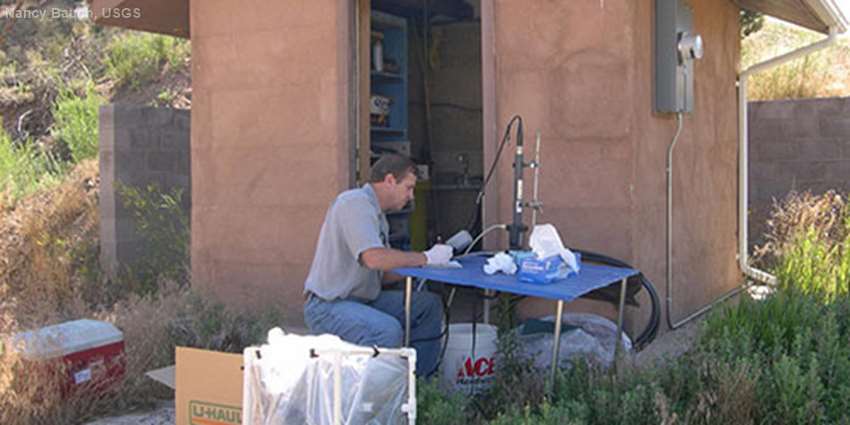The U.S. Geological Survey (USGS) is near the midpoint of a complex survey of the quality of the nation’s groundwater, its largest drinking-water resource, according to a recent news release. From 2012 to 2023, USGS is assessing groundwater throughout the country through extensive sampling
The USGS has identified 68 principal aquifers, or regionally extensive aquifers that can be used as a source of drinking water, across the nation. Groundwater pumped from these aquifers provides nearly 50 percent of the nation’s drinking water, the release noted.
Twenty of these principal aquifers account for about 75 percent of the nation’s groundwater pumped for public supply and 85 percent of the groundwater pumped for domestic supply. These 20 aquifers are being intensively evaluated by the USGS National Water-Quality Assessment Project, and summary results for five principal aquifers were recently completed and are now available online.
“The National Water-Quality Assessment Project is critical in helping resource managers understand how contaminants are introduced into the environment. This knowledge helps them make informed decisions about how to manage the nation’s water resources,” said Don Cline, USGS associate director for water. “Understanding the quality of our water is critical in sustaining this resource for generations to come.”
In-depth, regional-scale assessments conducted or planned for 2012 through 2023 focus on 20 of the most heavily used aquifers in the nation. Groundwater quality results for principal aquifers sampled in 2012 and 2013 are now available, summarized in the fact sheets below. Almost 400 deep public-supply wells were sampled within these aquifers, which were analyzed for a broad range of water-quality constituents:
- Basin and Range basin-fill aquifers (western U.S.)
- Valley and Ridge carbonate-rock aquifers and the Piedmont and Blue Ridge carbonate-rock aquifers (eastern U.S.)
- Northern Atlantic Coastal Plain aquifer system (east coast of U.S.)
- Southeastern Coastal Plain aquifer system (southeastern U.S.)
- Coastal Lowlands aquifer system (south central U.S.)
Findings by USGS included:
- One or more inorganic constituents exceeded human-health benchmarks in 4 to 20 percent of samples collected from the five principal aquifers.
- Organic contaminants were not found at levels of concern.
- Contaminants from geologic sources – primarily trace elements such as arsenic, fluoride and manganese – were the most common to exceed human-health benchmarks.
- Radioactive constituents exceeded human-health benchmarks by small percentages – 1 to 3 percent – in all but one of the five aquifers studied.
- The nutrient nitrate was the only constituent from manmade sources that exceeded the human-health benchmark. These findings were in the Valley and Ridge carbonate-rock aquifers and the Piedmont and Blue Ridge carbonate-rock aquifers at a low percentage (2 percent).
- Understanding how natural features and human activities affect groundwater quality helps to predict how and why aquifer vulnerability to contamination varies across the nation.
Read the full USGS news release for more background information and detail on the study.

